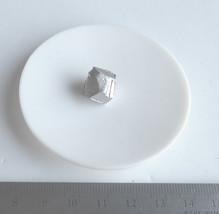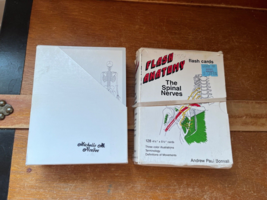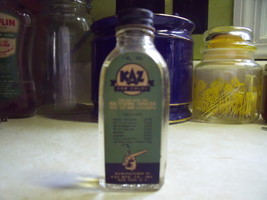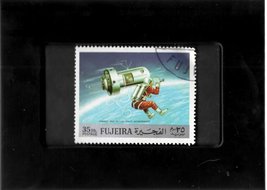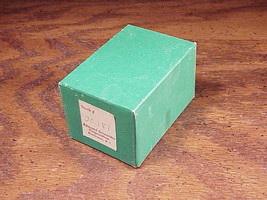1951 Texaco Lubricant Gear Oil Additives and 50 similar items
1951 TEXACO LUBRICANT GEAR OIL ADDITIVES TECHNICAL PUBLICATION PETROLEUM PRODUCT
$19.12
View full item details »
Shipping options
Offer policy
OBO - Seller accepts offers on this item.
Details
Return policy
Purchase protection
Payment options
PayPal accepted
PayPal Credit accepted
Venmo accepted
PayPal, MasterCard, Visa, Discover, and American Express accepted
Maestro accepted
Amazon Pay accepted
Nuvei accepted
View full item details »
Shipping options
Offer policy
OBO - Seller accepts offers on this item.
Details
Return policy
Purchase protection
Payment options
PayPal accepted
PayPal Credit accepted
Venmo accepted
PayPal, MasterCard, Visa, Discover, and American Express accepted
Maestro accepted
Amazon Pay accepted
Nuvei accepted
Item traits
| Category: | |
|---|---|
| Quantity Available: |
Only one in stock, order soon |
| Condition: |
Used |
| Country/Region of Manufacture: |
United States |
Listing details
| Shipping discount: |
Shipping weights of all items added together for savings. |
|---|---|
| Posted for sale: |
March 28 |
| Item number: |
1733776016 |
Item description
1951 TEXACO LUBRICANT GEAR OIL ADDITIVES TECHNICAL PUBLICATION PETROLEUM PRODUCT
GREETINGS, FEEL FREE
TO
"SHOP NAKED."
We deal in items we believe others will enjoy and want to purchase.
We are not experts.
We welcome any comments, questions, or concerns.
WE ARE TARGETING A GLOBAL MARKET PLACE.
Thanks in advance for your patronage.
Please Be sure to add WDG to your favorites list!
NOW FOR YOUR VIEWING PLEASURE?
VINTAGE LUBRICATION
PUBLICATION
VOLUME 37 ISSUE 4
GEAR OIL ADDITIVES
APRIL 1951
16 PAGES
SEPIA ILLUSTRATIONS
LINE DRAWINGS
GRAPHS / CHARTS
STAPLE BINDING
----------------------------------------------
FYI
Petroleum (L. petroleum, from early 15c. "petroleum, rock oil" (mid-14c. in Anglo-French), from Medieval Latin petroleum, from Latin petra rock(see petrous) + Latin: oleum oil (see oil (n.)) is a naturally occurring, yellow-to-black liquid found in geologic formations beneath the Earth's surface, which is commonly refined into various types of fuels. It consists of hydrocarbons of various molecular weights and other liquid organic compounds. The name petroleum covers both naturally occurring unprocessed crude oil and petroleum products that are made up of refined crude oil. A fossil fuel, petroleum is formed when large quantities of dead organisms, usually zooplankton and algae, are buried underneath sedimentary rock and subjected to intense heat and pressure.
Petroleum is recovered mostly through oil drilling (natural petroleum springs are rare). This comes after the studies of structural geology (at the reservoir scale), sedimentary basin analysis, reservoir characterization (mainly in terms of the porosity and permeability of geologic reservoir structures). It is refined and separated, most easily by distillation, into a large number of consumer products, from gasoline (petrol) and kerosene to asphalt and chemical reagents used to make plastics and pharmaceuticals. Petroleum is used in manufacturing a wide variety of materials, and it is estimated that the world consumes about 90 million barrels each day.
The use of fossil fuels, such as petroleum, has a negative impact on Earth's biosphere, releasing pollutants and greenhouse gases into the air and damaging ecosystems through events such as oil spills. Concern over the depletion of the earth's finite reserves of oil, and the effect this would have on a society dependent on it, is a concept known as peak oil.
Etymology
The word petroleum comes from Greek: ????? (petra) for rocks and Greek: ?????? (elaion) for oil. The term was found (in the spelling "petraoleum") in 10th-century Old English sources. It was used in the treatise De Natura Fossilium, published in 1546 by the German mineralogist Georg Bauer, also known as Georgius Agricola. In the 19th century, the term petroleum was frequently used to refer to mineral oils produced by distillation from mined organic solids such as cannel coal (and later oil shale), and refined oils produced from them; in the United Kingdom, storage (and later transport) of these oils were regulated by a series of Petroleum Acts, from the Petroleum Act 1862 onwards.
History
Early history
Petroleum, in one form or another, has been used since ancient times, and is now important across society, including in economy, politics and technology. The rise in importance was due to the invention of the internal combustion engine, the rise in commercial aviation, and the importance of petroleum to industrial organic chemistry, particularly the synthesis of plastics, fertilizers, solvents, adhesives and pesticides.
More than 4000 years ago, according to Herodotus and Diodorus Siculus, asphalt was used in the construction of the walls and towers of Babylon; there were oil pits near Ardericca (near Babylon), and a pitch spring on Zacynthus. Great quantities of it were found on the banks of the river Issus, one of the tributaries of the Euphrates. Ancient Persian tablets indicate the medicinal and lighting uses of petroleum in the upper levels of their society. By 347 AD, oil was produced from bamboo-drilled wells in China. Early British explorers to Myanmar documented a flourishing oil extraction industry based in Yenangyaung, that in 1795 had hundreds of hand-dug wells under production. The mythological origins of the oil fields at Yenangyaung, and its hereditary monopoly control by 24 families, indicate very ancient origins.
Modern history
In 1847, the process to distill kerosene from petroleum was invented by James Young. He noticed a natural petroleum seepage in the Riddings colliery at Alfreton, Derbyshire from which he distilled a light thin oil suitable for use as lamp oil, at the same time obtaining a thicker oil suitable for lubricating machinery. In 1848 Young set up a small business refining the crude oil.
Young eventually succeeded, by distilling cannel coal at a low heat, in creating a fluid resembling petroleum, which when treated in the same way as the seep oil gave similar products. Young found that by slow distillation he could obtain a number of useful liquids from it, one of which he named "paraffine oil" because at low temperatures it congealed into a substance resembling paraffin wax.
The production of these oils and solid paraffin wax from coal formed the subject of his patent dated 17 October 1850. In 1850 Young Meldrum and Edward William Binney entered into partnership under the title of E.W. Binney Co. at Bathgate in West Lothian and E. Meldrum Co. at Glasgow; their works at Bathgate were completed in 1851 and became the first truly commercial oil-works in the world with the first modern oil refinery, using oil extracted from locally-mined torbanite, shale, and bituminous coal to manufacture naphtha and lubricating oils; paraffin for fuel use and solid paraffin were not sold until 1856.
Another early refinery was built by Ignacy ?ukasiewicz, providing a cheaper alternative to whale oil. The demand for petroleum as a fuel for lighting in North America and around the world quickly grew.[16] Edwin Drake's 1859 well near Titusville, Pennsylvania, is popularly considered the first modern well. Drake's well is probably singled out because it was drilled, not dug; because it used a steam engine; because there was a company associated with it; and because it touched off a major boom. However, there was considerable activity before Drake in various parts of the world in the mid-19th century. A group directed by Major Alexeyev of the Bakinskii Corps of Mining Engineers hand-drilled a well in the Baku region in 1848. There were engine-drilled wells in West Virginia in the same year as Drake's well. An early commercial well was hand dug in Poland in 1853, and another in nearby Romania in 1857. At around the same time the world's first, small, oil refinery was opened at Jas?o in Poland, with a larger one opened at Ploie?ti in Romania shortly after. Romania is the first country in the world to have had its annual crude oil output officially recorded in international statistics: 275 tonnes for 1857.
The first commercial oil well in Canada became operational in 1858 at Oil Springs, Ontario (then Canada West). Businessman James Miller Williams dug several wells between 1855 and 1858 before discovering a rich reserve of oil four metres below ground. Williams extracted 1.5 million litres of crude oil by 1860, refining much of it into kerosene lamp oil. William's well became commercially viable a year before Drake's Pennsylvania operation and could be argued to be the first commercial oil well in North America. The discovery at Oil Springs touched off an oil boom which brought hundreds of speculators and workers to the area. Advances in drilling continued into 1862 when local driller Shaw reached a depth of 62 metres using the spring-pole drilling method. On January 16, 1862, after an explosion of natural gas Canada's first oil gusher came into production, shooting into the air at a recorded rate of 3,000 barrels per day. By the end of the 19th century the Russian Empire, particularly the Branobel company in Azerbaijan, had taken the lead in production.
Access to oil was and still is a major factor in several military conflicts of the twentieth century, including World War II, during which oil facilities were a major strategic asset and were extensively bombed. The German invasion of the Soviet Union included the goal to capture the Baku oilfields, as it would provide much needed oil-supplies for the German military which was suffering from blockades. Oil exploration in North America during the early 20th century later led to the US becoming the leading producer by mid-century. As petroleum production in the US peaked during the 1960s, however, the United States was surpassed by Saudi Arabia and the Soviet Union.
Today, about 90 percent of vehicular fuel needs are met by oil. Petroleum also makes up 40 percent of total energy consumption in the United States, but is responsible for only 1 percent of electricity generation. Petroleum's worth as a portable, dense energy source powering the vast majority of vehicles and as the base of many industrial chemicals makes it one of the world's most important commodities. Viability of the oil commodity is controlled by several key parameters, number of vehicles in the world competing for fuel, quantity of oil exported to the world market (Export Land Model), Net Energy Gain (economically useful energy provided minus energy consumed), political stability of oil exporting nations and ability to defend oil supply lines.
The top three oil producing countries are Russia, Saudi Arabia and the United States. About 80 percent of the world's readily accessible reserves are located in the Middle East, with 62.5 percent coming from the Arab 5: Saudi Arabia, UAE, Iraq, Qatar and Kuwait. A large portion of the world's total oil exists as unconventional sources, such as bitumen in Canada and oil shale in Venezuela. While significant volumes of oil are extracted from oil sands, particularly in Canada, logistical and technical hurdles remain, as oil extraction requires large amounts of heat and water, making its net energy content quite low relative to conventional crude oil. Thus, Canada's oil sands are not expected to provide more than a few million barrels per day in the foreseeable future.
Composition
In its strictest sense, petroleum includes only crude oil, but in common usage it includes all liquid, gaseous, and solid hydrocarbons. Under surface pressure and temperature conditions, lighter hydrocarbons methane, ethane, propane and butane occur as gases, while pentane and heavier ones are in the form of liquids or solids. However, in an underground oil reservoir the proportions of gas, liquid, and solid depend on subsurface conditions and on the phase diagram of the petroleum mixture.
An oil well produces predominantly crude oil, with some natural gas dissolved in it. Because the pressure is lower at the surface than underground, some of the gas will come out of solution and be recovered (or burned) as associated gas or solution gas. A gas well produces predominantly natural gas. However, because the underground temperature and pressure are higher than at the surface, the gas may contain heavier hydrocarbons such as pentane, hexane, and heptane in the gaseous state. At surface conditions these will condense out of the gas to form natural gas condensate, often shortened to condensate. Condensate resembles petrol in appearance and is similar in composition to some volatile light crude oils.
Chemistry
Petroleum is a mixture of a very large number of different hydrocarbons; the most commonly found molecules are alkanes (paraffins), cycloalkanes (naphthenes), aromatic hydrocarbons, or more complicated chemicals like asphaltenes. Each petroleum variety has a unique mix of molecules, which define its physical and chemical properties, like color and viscosity.
The alkanes, also known as paraffins, are saturated hydrocarbons with straight or branched chains which contain only carbon and hydrogen and have the general formula CnH2n+2. They generally have from 5 to 40 carbon atoms per molecule, although trace amounts of shorter or longer molecules may be present in the mixture.
Petroleum industry
The petroleum industry is involved in the global processes of exploration, extraction, refining, transporting (often with oil tankers and pipelines), and marketing petroleum products. The largest volume products of the industry are fuel oil and petrol. Petroleum is also the raw material for many chemical products, including pharmaceuticals, solvents, fertilizers, pesticides, and plastics. The industry is usually divided into three major components: upstream, midstream and downstream. Midstream operations are usually included in the downstream category.
Petroleum is vital to many industries, and is of importance to the maintenance of industrialized civilization itself, and thus is a critical concern to many nations. Oil accounts for a large percentage of the world's energy consumption, ranging from a low of 32 percent for Europe and Asia, up to a high of 53 percent for the Middle East, South and Central America (44%), Africa (41%), and North America (40%). The world at large consumes 30 billion barrels (4.8 km) of oil per year, and the top oil consumers largely consist of developed nations. In fact, 24 percent of the oil consumed in 2004 went to the United States alone, though by 2007 this had dropped to 21 percent of world oil consumed.
In the US, in the states of Arizona, California, Hawaii, Nevada, Oregon and Washington, the Western States Petroleum Association (WSPA) represents companies responsible for producing, distributing, refining, transporting and marketing petroleum. This non-profit trade association was founded in 1907, and is the oldest petroleum trade association in the United States.
-------------
Texaco, Inc. ("The Texas Company") is an American oil brand owned and operated by Chevron Corporation. Its flagship product is its fuel "Texaco with Techron". It also owned the Havoline motor oil brand. Texaco was an independent company until its refining operations merged into Chevron in 2001, at which time most of its station franchises were divested to Shell plc through its American division.
Texaco began as the "Texas Fuel Company", founded in 1902 in Beaumont, Texas, by Joseph S. Cullinan, Thomas J. Donoghue, and Arnold Schlaet upon the discovery of oil at Spindletop. The Texas Fuel Company was not set up to drill wells or to produce crude oil. To accomplish this, Cullinan organized the Producers Oil Company in 1902, as a group of investors affiliated with The Texas Fuel Company. Men such as John W. ("Bet A Million") Gates invested in "certificates of interest" to an amount of almost ninety thousand dollars. Future restructuring would merge Producers Oil Company and The Texas Fuel Company as Texaco when the company needed additional funding, which J.W. Gates provided in the amount of approximately $590,000 in return for company stock.
Texaco was one of the Seven Sisters which dominated the global petroleum industry from the mid-1940s to the 1970s. Its current logo features a white star in a red circle (a reference to the lone star of Texas), leading to the long-running advertising jingles "You can trust your car to the man who wears the star" and "Star of the American Road." The company was headquartered in Harrison, New York, near White Plains, prior to the merger with Chevron.
Texaco gasoline comes with Techron, an additive developed by Chevron, as of 2005, replacing the previous CleanSystem3. The Texaco brand is strong in the U.S., Latin America, and West Africa. It has a presence in Europe as well; for example, it is a well-known retail brand in the UK, with around 980 Texaco-branded service stations.
History
1902?59: Beginnings
Texaco was founded in Beaumont, Texas as the "Texas Fuel Company" in 1902, by Jim Hogg, Joseph S. Cullinan, John Warne Gates, and Arnold Schlaet. On 1 May 1902, the Texas Company was formed from the assets of Texas Fuel assets, and additional capitalization. In 1905, it established an operation in Antwerp, Belgium, under the name Continental Petroleum Company, which it acquired control of in 1913. In 1915, Texaco moved to new 13 story offices on 1111 Rusk St., Houston, Texas. In 1928, Texaco became the first U.S. oil company to sell its gasoline nationwide under one single brand name in all of the then 48 states.
In 1931, Texaco purchased the Indian Oil Company, based in Illinois. This expanded Texaco's refining and marketing base in the Midwest and also gave Texaco the rights to Indian's Havoline motor oil, which became a Texaco product. The next year, Texaco introduced Fire Chief gasoline nationwide, a so-called "super-octane" motor fuel touted as meeting or exceeding government standards for gasoline for fire engines and other emergency vehicles. It was promoted through a radio program over NBC hosted by Ed Wynn, called the Texaco Fire Chief.
In 1936, the Texas Corporation purchased the Barco oil concession in Colombia, and formed a joint venture with Socony-Vacuum, now Mobil, to develop it. Over the next three years the company engaged in a highly challenging project to drill wells and build a pipeline to the coast across mountains and then through uncharted swamps and jungles. During this time, Texaco also illegally supplied the fascist Nationalist faction in the Spanish Civil War with a total 3,500,000 barrels (560,000 m3) of oil. For these illegal sales to Francisco Franco's fascist forces the company was fined $20,000 for violating the Neutrality Act of 1937, although it continued to sell to Franco on credit until the end of the war.
Also in 1936, marketing operations "East of Suez" (including Asia, East Africa, and Australasia) were placed into a joint venture with Standard Oil Company of California ? Socal (now Chevron) ? under the brand name Caltex, in exchange for Socal placing its Bahrain refinery and Arabian oilfields into the venture. The next year, Texaco commissioned industrial designer Walter Dorwin Teague to develop a modern service station design.
In 1938, Texaco introduced Sky Chief gasoline, a premium fuel developed from the ground up as a high-octane gasoline rather than just an ethylized regular product. In 1939, Texaco became one of the first oil companies to introduce a "Registered Rest Room" program to ensure that restroom facilities at all Texaco stations nationwide maintained a standard level of cleanliness to the motoring public.
After the onset of World War II in 1939, Texaco's CEO, Torkild Rieber, admirer of H-tler, hired pro-Na-i assistants who cabled Berlin "coded information about ships leaving New York for Britain and what their cargoes were." This espionage easily enabled H-tler to destroy the ships. In 1940, Rieber was forced to resign when his connections with German Na-ism, and his illegal supply of oil to the fascist forces during the Spanish Civil War were made public by the Herald Tribune through information produced by British Security Coordination. Life Magazine portrayed Rieber's resignation as unfair, advocating that he only dined with Westrick, and lent him a company car.
During the war, Texaco ranked 93rd among United States corporations in the value of military production contracts. In 1947, Caltex expanded to include Texaco's European marketing operations. That same year, Texaco merged its British operation with Trinidad Leaseholds under the name Regent; it gained full control of Regent in 1956, but the Regent brand remained in use until 1968?9. In 1954, the company added the detergent additive Petrox to its "Sky Chief" gasoline, which was also souped up with higher octane to meet the antiknock needs of new cars with high-compression engines.
The next year, Texaco became the sole sponsor of The Huntley-Brinkley Report on NBC-TV. In 1959, the Texas Company changed its corporate name to Texaco, Inc. to better reflect the value of the Texaco brand name, which represented the biggest selling gasoline brand in the U.S. and only marketer selling gasoline under one brand name in all (by then) 50 states. It also acquired McColl-Frontenac Oil Company Ltd. of Canada and changes its name to Texaco Canada Limited. Around this time, Paragon Oil, a major fuel oil distribution company in the northeastern U.S., was acquired.
(VIDEO PICTURE 11 12 FOR DISPLAY ONLY)
---------------------------
Thanks for choosing this sale. You may email for alternate payment arrangements. We combine shipping. Please pay promptly after the auction. The item will be shipped upon receipt of funds. WE ARE GOING GREEN, SO WE DO SOMETIMES USE CLEAN RECYCLED MATERIALS TO SHIP.
Please leave feedback when you have received the item and are satisfied. Please respond when you have received the item * If you were pleased with this transaction, please respond with all 5 stars! If you are not pleased, let us know via e-mail. Our goal is for 5-star service. We want you to be a satisfied, return customer.
Please express any concerns or questions. More pictures are available upon request. The winning bid will incur the cost of S/H INSURED FEDEX OR USPS. See rate calculator or email FOR ESTIMATE. International Bidders are Welcome but be mindful if your country is excluded from safe shipping.
(description exceeds maximum possible length)
|
Why are we showing these items?
Search Results
Category "Other"
Country/Region of Manufacture
Country/Region of Manufacture
Condition
Condition
Material
Handmade
Handmade
|

-
Refine your browsing experience
We can show you more items that are exactly like the original item, or we can show you items that are similar in spirit. By default we show you a mix.
This item has been added to your cart
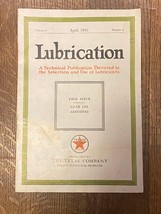 1951 TEXACO LUBRICANT GEAR OIL ADDITIVES TECHNICAL PUBLICATION PETROLEUM PRODUCT added to cart.
Only one available in stock
1951 TEXACO LUBRICANT GEAR OIL ADDITIVES TECHNICAL PUBLICATION PETROLEUM PRODUCT added to cart.
Only one available in stock
View Cart or continue shopping.
 Please wait while we finish adding this item to your cart.
Please wait while we finish adding this item to your cart.
Get an item reminder
We'll email you a link to your item now and follow up with a single reminder (if you'd like one). That's it! No spam, no hassle.
Already have an account?
Log in and add this item to your wish list.
































